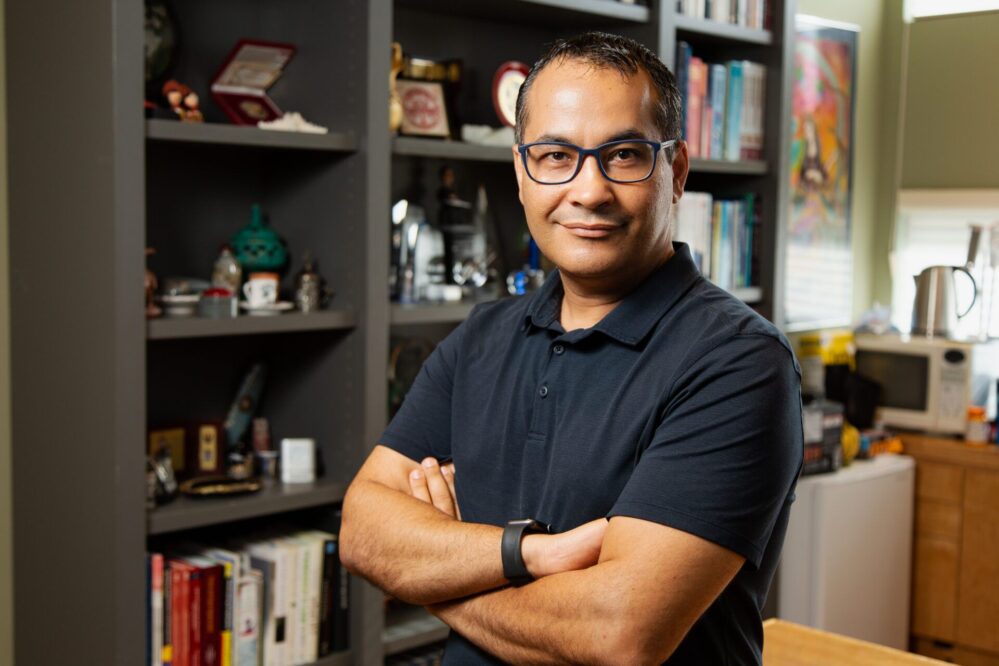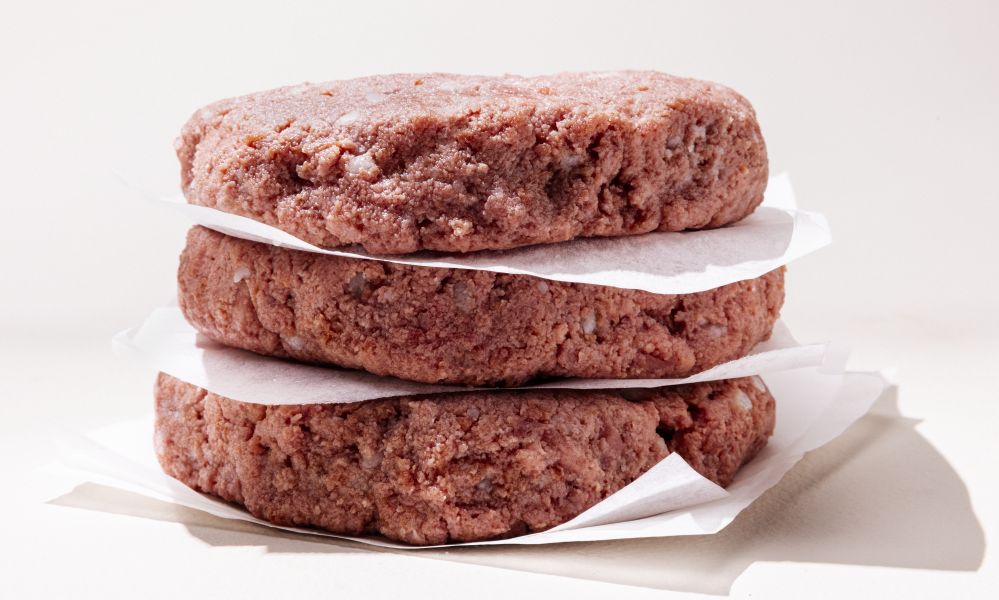- Armed with $40 million in funding, Los Angeles-based startup Omeat has emerged from stealth with a “simple and elegant solution” to scaling cultivated meat production involving the humane extraction of growth factors and other components from “healthy, living cows.”
- Founded two years ago by tissue engineer Dr. Ali Khademhosseini, Omeat raised $3.5 million in seed funding in 2021 and $36.5 million in series A funding in 2022 backed by S2G Ventures, Google Ventures (GV), Bold Capital Partners, Tyson Ventures, Rethink Food, Trailhead Capital, and Cavallo Ventures.
- It is currently building a pilot plant in Los Angeles that will be operational later this year.
- Khademhosseini, who was born in Tehran and grew up in Canada, is the director and CEO of the Terasaki Institute, a nonprofit specializing in biomedical innovation, and former professor at the University of California, Los Angeles. Between 2005 and 2017, he was a professor at Harvard Medical School, and the Wyss Institute for Biologically Inspired Engineering.

‘Our process doesn’t use FBS or recombinant proteins’
While most cultivated meat startups have spent years trying to eradicate animal components from cell culture media, Omeat says cows will play a starring role in a novel approach to production it claims can radically reduce input costs and enable profitable beef production in 10,000-liter bioreactors.
“The exciting thing is that we can achieve price parity today if we operate at scale, without relying on future innovations,” Omeat founder and CEO Dr. Ali Khademhosseini told AgFunder News (AFN). “And we can do that with the 10,000-liter bioreactors we’re planning in our pilot plant, whereas others require really large bioreactors that haven’t been validated.”
Rather than using fetal bovine serum (FBS), a nutrient-rich liquid harvested from fetuses taken from pregnant cows during slaughter, Omeat extracts key components such as growth factors from the plasma of living cows on its farm. The plasma is withdrawn in a pain-free process much the same as that used in human plasma donation, said Khademhosseini.
Omeat hooks up cows to a plasmapheresis machine that collects blood, separates out the plasma and returns the remaining blood components to the cow, he explained. The plasma then undergoes additional processing steps enabling Omeat to extract components of interest such as growth factors.
“We do not deplete the animal of blood,” said Khademhosseini. “The red blood cells and other things remain in the animal. The process involves a needle stick and the rest of the time the animals are basically on the pasture.”
‘Our goal is to be a bridge to the future of the meat industry’
This is both more humane and more scalable than using FBS, and far cheaper than buying recombinant proteins made by genetically engineered microbes via precision fermentation, claims Khademhosseini.
“With one cow providing plasma weekly, we can create many cows’ worth of meat annually. This means we can feed the planet with only a fraction of the current number of animals used in beef production. We see ourselves as a meat company, and our goal is to be a bridge to the future of the meat industry. It’s way more efficient, and we don’t have to sacrifice the cow,” he explained.
Although some commentators argue that the whole point of cultivated beef is to displace animal agriculture, Khademhosseini claims his approach would still enable a 95% reduction in cattle production and transform the unit economics of cultivated meat.
“I think most people are hoping that cost media will come down as they scale,” he said. “But we’re still years away from that. We came up with a totally different way of trying to address these challenges by asking is there a way for us to partner with existing food infrastructure by collecting ingredients from cows, without slaughtering them.
“So in our model, the animals that do remain are farmed on sustainable farms that utilize rotational grazing and other sustainable practices such as no tilling, planting cover crops, and natural fertilization by our free-roaming herd.”
He added: “Our process doesn’t use FBS or recombinant proteins, and the other ingredients we need such as amino acids and sugars are relatively cheap.”
While it’s not an easy time to raise money, “pretty much everyone we spoke to could see the advantages of our process compared to everyone else’s,” he claimed. “We’ve also made other innovations in bioprocessing that make the whole process more efficient in terms of being able to recover ingredients that we want from waste streams and really drive up yields.”

20 times more meat, without slaughter
So what would Omeat’s operation look like at scale?
“So to make, say 10,000 metric tons of meat annually will require around 3-4,000 cows,” said Khademhosseini. “But remember that they are not slaughtered, so we’re talking about cows that can provide the ingredients to produce that amount of meat year after year [cows can live 15-20 years], producing magnitudes more beef than if we slaughtered those same cows after two or three years.
“If you raise a cow for slaughter after about three years, you may get up to 300 kilograms of meat per cow. Over three years that would be up to 100 kilos per year. With our process, one cow can provide ingredients that will produce 2,000 kilograms of meat per year or 6,000 kilograms of meat over three years, so that’s 20 times more meat.”
100% pure animal protein
Unlike some cultivated meat startups, Omeat is not immortalizing cells such that they will proliferate indefinitely, but extracting adult stem cells or precursor cells that are destined to become particular types of cells such as muscle cells, said Khademhosseini.
“Cells can grow up to what they call Hayflick limit, which is 70 doublings. Once you take cells from the body, in actuality, they can go to somewhere around 30 doublings, but that is already over a billion times expansion, so you can get quite a bit of tissue from a single cell. Then when we need more [cells], we go back to our cows on the farm [and extract cells in a painless biopsy process].”
He added: “We have an interest in doing both muscle and fat cells, but at this point our protein program is more advanced, so our first products may have cultivated protein and perhaps some plant-based fat, although our vision is to be able to do all of it [cell-cultured fat and protein].”
While Khademhosseini’s background is in tissue engineering, Omeat will debut with ground beef products rather than more complex and costly structured tissue-engineered products involving scaffolding or other techniques to create products such as steaks, said Khademhosseini.
“But because our price points are so much lower than anyone else’s we plan to have 100% pure animal protein in our first wave of products [rather than adding plant-based protein to create hybrid products].”
The pilot plant near Los Angeles should be up and running soon, he said: “We will have functionality within the pilot plant—maybe not fully finished—but such that we can validate all the GMP processes, in the next few months. We’ve already submitted a dossier to the FDA and we’re deep in discussions with the USDA.”
‘One of the world’s most renowned tissue engineers…’
Dr. Elliot Swartz, principal scientist, cultivated meat at nonprofit The Good Food Institute, told AFN: “In a webinar for tissue engineers that Ali recorded with me last year, he said, “At the end of the day, the highest impact of tissue engineers will be in the food system,” and I couldn’t agree more.
“It is really energizing to see one of the world’s most renowned tissue engineers throw their hat in the ring and be confident in being able to develop a cost-effective approach for cultivated meat manufacturing.”



